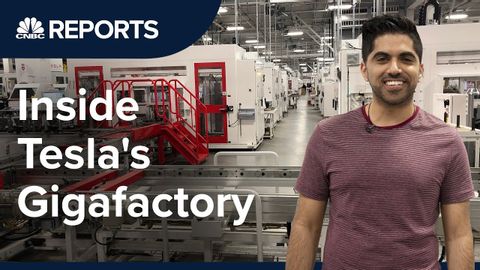テラス初のギガファクトリーの内部を見学してみよう|CNBCレポート (Take a tour inside Teslas first Gigafactory | CNBC Reports)
PENG が 2021 年 01 月 14 日 に投稿  この条件に一致する単語はありません
この条件に一致する単語はありませんUS /ɛnˈtaɪr/
・
UK /ɪn'taɪə(r)/
US /ɪˈvɛntʃuəli/
・
UK /ɪˈventʃuəli/
US /ɪˈkwɪvələnt/
・
UK /ɪˈkwɪvələnt/
- adj.同等の;同義の
- n.等価 : (効果 : 価値などが)同等のもの
US /ɛnˈkaʊntɚ/
・
UK /ɪn'kaʊntə(r)/
- v.t./i.出会う;(思いがけず)出会う
- n.出会い
エネルギーを使用
すべての単語を解除
発音・解説・フィルター機能を解除

